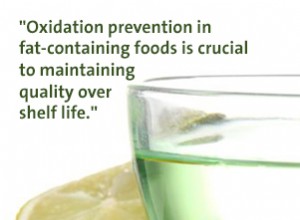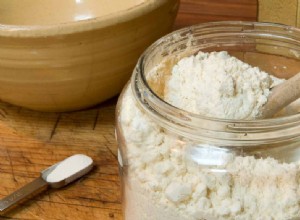International Food Information Council (IFIC) and U.S. Food and Drug Administration (FDA)

For centuries, ingredients have served useful functions in a variety of foods. Our ancestors used salt to preserve meats and fish, added herbs and spices to improve the flavor of foods, preserved fruit with sugar, and pickled cucumbers in a vinegar solution. Today, consumers demand and enjoy a food supply that is flavorful, nutritious, safe, convenient, colorful and affordable. Food additives and advances in technology help make that possible.
There are thousands of ingredients used to make foods. The Food and Drug Administration (FDA) maintains a list of over 3000 ingredients in its data base "Everything Added to Food in the United States", many of which we use at home every day (e.g., sugar, baking soda, salt, vanilla, yeast, spices and colors).
Still, some consumers have concerns about additives because they may see the long, unfamiliar names and think of them as complex chemical compounds. In fact, every food we eat - whether a just-picked strawberry or a homemade cookie - is made up of chemical compounds that determine flavor, color, texture and nutrient value. All food additives are carefully regulated by federal authorities and various international organizations to ensure that foods are safe to eat and are accurately labeled.
The purpose of this brochure is to provide helpful background information about food and color additives: what they are, why they are used in foods and how they are regulated for safe use.
Why Are Food and Color Ingredients Added to Food?
Additives perform a variety of useful functions in foods that consumers often take for granted. Some additives could be eliminated if we were willing to grow our own food, harvest and grind it, spend many hours cooking and canning, or accept increased risks of food spoilage. But most consumers today rely on the many technological, aesthetic and convenient benefits that additives provide.
Following are some reasons why ingredients are added to foods:
1. To Maintain or Improve Safety and Freshness: Preservatives slow product spoilage caused by mold, air, bacteria, fungi or yeast. In addition to maintaining the quality of the food, they help control contamination that can cause foodborne illness, including life-threatening botulism. One group of preservatives -- antioxidants -- prevents fats and oils and the foods containing them from becoming rancid or developing an off-flavor. They also prevent cut fresh fruits such as apples from turning brown when exposed to air.
2. To Improve or Maintain Nutritional Value: Vitamins and minerals (and fiber) are added to many foods to make up for those lacking in a person's diet or lost in processing, or to enhance the nutritional quality of a food. Such fortification and enrichment has helped reduce malnutrition in the U.S. and worldwide. All products containing added nutrients must be appropriately labeled.
3. Improve Taste, Texture and Appearance: Spices, natural and artificial flavors, and sweeteners are added to enhance the taste of food. Food colors maintain or improve appearance. Emulsifiers, stabilizers and thickeners give foods the texture and consistency consumers expect. Leavening agents allow baked goods to rise during baking. Some additives help control the acidity and alkalinity of foods, while other ingredients help maintain the taste and appeal of foods with reduced fat content.
What Is a Food Additive?
In its broadest sense, a food additive is any substance added to food. Legally, the term refers to "any substance the intended use of which results or may reasonably be expected to result -- directly or indirectly -- in its becoming a component or otherwise affecting the characteristics of any food." This definition includes any substance used in the production, processing, treatment, packaging, transportation or storage of food. The purpose of the legal definition, however, is to impose a premarket approval requirement. Therefore, this definition excludes ingredients whose use is generally recognized as safe (where government approval is not needed), those ingredients approved for use by FDA or the U.S. Department of Agriculture prior to the food additives provisions of law, and color additives and pesticides where other legal premarket approval requirements apply.
Direct food additives are those that are added to a food for a specific purpose in that food. For example, xanthan gum -- used in salad dressings, chocolate milk, bakery fillings, puddings and other foods to add texture -- is a direct additive. Most direct additives are identified on the ingredient label of foods.
Indirect food additives are those that become part of the food in trace amounts due to its packaging, storage or other handling. For instance, minute amounts of packaging substances may find their way into foods during storage. Food packaging manufacturers must prove to the U.S. Food and Drug Administration (FDA) that all materials coming in contact with food are safe before they are permitted for use in such a manner.
What Is a Color Additive?
food ingredients additives and colors - vanilla chocolate and strawberry milkshakes A color additive is any dye, pigment or substance which when added or applied to a food, drug or cosmetic, or to the human body, is capable (alone or through reactions with other substances) of imparting color. FDA is responsible for regulating all color additives to ensure that foods containing color additives are safe to eat, contain only approved ingredients and are accurately labeled.
Color additives are used in foods for many reasons: 1) to offset color loss due to exposure to light, air, temperature extremes, moisture and storage conditions; 2) to correct natural variations in color; 3) to enhance colors that occur naturally; and 4) to provide color to colorless and "fun" foods. Without color additives, colas wouldn't be brown, margarine wouldn't be yellow and mint ice cream wouldn't be green. Color additives are now recognized as an important part of practically all processed foods we eat.
FDA's permitted colors are classified as subject to certification or exempt from certification, both of which are subject to rigorous safety standards prior to their approval and listing for use in foods.
Certified colors are synthetically produced (or human made) and used widely because they impart an intense, uniform color, are less expensive, and blend more easily to create a variety of hues. There are nine certified color additives approved for use in the United States (e.g., FD&C Yellow No. 6. See chart for complete list.). Certified food colors generally do not add undesirable flavors to foods.
Colors that are exempt from certification include pigments derived from natural sources such as vegetables, minerals or animals. Nature derived color additives are typically more expensive than certified colors and may add unintended flavors to foods. Examples of exempt colors include annatto extract (yellow), dehydrated beets (bluish-red to brown), caramel (yellow to tan), beta-carotene (yellow to orange) and grape skin extract (red, green).



